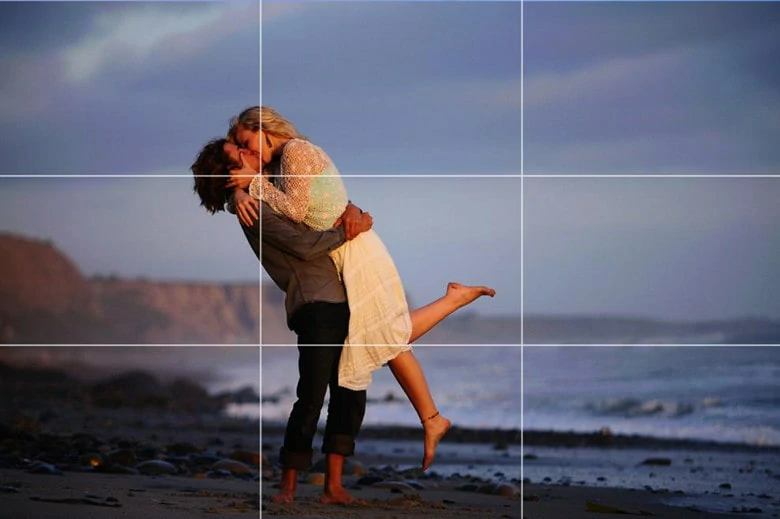For those unfamiliar with the phrase "rule of thirds," it is the rule that regulates the composition of a subject in the left or right third stage of an image and is often used in photography. While on it, it leaves the other two open. In other forms of composition, the rule of thirds propels well-composed and eye-catching shots. The obsession with the rule of thirds is motivated by the desire for perfection, which is not bad in the actual sense.
Not every photographer likes observing this rule; thus, not everyone likes sticking to rules, especially when it comes to a liberal professional photographer. To Some photographers, this rule can mean a whole different thing, but the concepts remain the same. But if you are new to this phrase, you will have to read through the article to understand the Rule of thirds meaning, the use, and other relevant information about this term. Please follow.
Can't Miss: How to Quickly Digitize Your Old Photos>
What's the Rule of Thirds
It is always good to give a formal definition of things like this; there is no specific explanation of the rule of thirds; you just have to choose the ones that work for you. Without wasting much time, the rule of thirds in photography simply means the composition of your image when divided into three equal parts from both horizontal and vertical sides. The following is a great example of rule of thirds.

Image Uses the Rule of Thirds
There is only one reason why people choose to apply the rule of thirds: balance. With your subject sitting at the perfect angle, any photographer can come out with the best outcome, no matter the type of camera in use. The rule also demands that the image be divided by two vertical lines and two horizontal lines to strike a perfect balance. And mind you, this rule is applicable not only in photography but also in videography.
Best Practices of Rule of Thirds
What is worth doing is worth doing well, and the same applies to the rule of thirds. To make the best out of this, there are a few professionally acclaimed measures or steps you should take. These steps are termed "international best practices:" a method that has been tested and confirmed to be one of the best ways to apply the rule of thirds.
First is that you must start your capturing from top to bottom and move the camera slowly and gently up and down. Note that by slowly moving the camera, you will be able to clearly see which of the images you wish to apply more visual elements on. Once you have successfully placed it, move the camera from one side to the other to find the perfect right third angle for it.
This is where you know where you should highlight and where you should not. Shooting a video scene, find out which part of your photo or video needs to be highlighted. Mind you, when you highlight the wrong part, it may affect the whole image's appearance.
Also, one of the best practices demands that a photographer first examine every image they see, be it online, on a bus stop ad, in magazines, etc. They should be able to imagine a grade line across the image they have captured; that's how any photographer can get an accurate shot as incorporated by the third rule.
Last but not least, the best practice in the rule of thirds is ensuring that the image is at the centre of the grid line. Although it all depends on the angle you want to capture, if it is meant to be at the centre, make sure it fits the centre rectangle position of the grids.
When to Break the Rule of Thirds
Well, sometimes in life, you need to go against the rules to achieve your aim; the same goes for the rule of thirds in photography. But you don't just go against rules; some situations call for it. Some of them include:
Symmetry
Asymmetry situation in photography occurs when a photographer sees a harmonious image that appeals to them; such appeal usually comes from its natural balance. The thing is, the human eyes are naturally programmed to automatically strike a balance on things that appeals to them. So, when you come across situations like this, you are bound to take a break from the rules.
Framing
Framing has a lot to do with balance; this is the main reason why photographers stick to the rules in the first place. But when you end up getting the right framing, sticking to the rules will be irrelevant. You can get the perfect framing from virtually every angle; it can be in humans, a house, or an object – basically anything from the environment.
Leading Lines
When you have the perfect leading lines, you will notice that the rule of thirds is useless. These lines will lead you straight to that fitting frame.
The Bottom Line
Photography is a beautiful art to indulge in; it is even more promising when you stick to the rules of the art. And to do that, you need to observe the rule of the thirds, which has proven to be the most important rule in the field of photography. So, we urge you to like and share this post for the sake of prospective photographers out there who may need this information.















